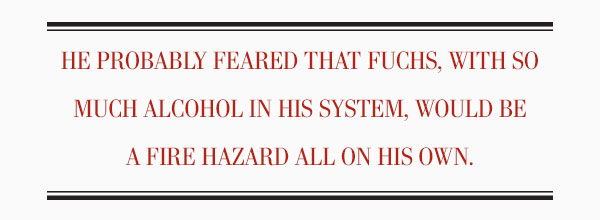
– Illustration by Malcolm Jones –
For most Canadians, the Great War, an ocean away and a century ago, is a distant horror. We know of the tragic valour of Canadian soldiers on the battlefields of France from Ypres to Artois to the Somme. The Canadian National Vimy Memorial is a fitting monument to the battle that helped define our nation. It’s hard to imagine anything amusing emerging from that terrible war from 1914 to 1918. But there is at least one incident that, with a century of hindsight, seems at least mildly amusing.
In the early part of the last century, the Great War actually came to North American shores as a clandestine conflict.
Ken Cuthbertson, a veteran journalist and historian, recently published a wonderful book about the Halifax Explosion, appropriately entitled The Halifax Explosion. In it, while not central to his principal narrative, he touches on this early 20th-century secret war of German spies and sabotage in the United States and Canada.
In 1916, there was a spy ring operating out of the German embassy in Washington. There were more than eight million German immigrants in the United States at this time and a substantial number in Canada, too.
German agents undertook covert operations in North America and engaged in acts of sabotage, including what is known as the Black Tom explosion in the New York harbour. Munitions were stored in rail cars and barges at the pier. On the night of July 30, 1916, small fires were set that eventually set off a series of explosions which sent shrapnel off in all directions. Some pieces were even found lodged in the Statue of Liberty.
Canada was not left out of this secret war. A German agent based in the U.S., Paul Koenig, decided that blowing up the Welland Canal would damage Canada-U.S. commerce as well as the war effort. Fortunately, competence was in short supply in the operation and it was thwarted in a dispute over $2.57—a bargain basement price to save the Welland Canal. Here is how it all went down.

Spymaster Koenig recruited a distant relative, George Fuchs, who was living in Niagara Falls, N.Y., to spy for the Kaiser in Canada for a whopping $18 a week. Fuchs, who apparently was unemployed at the time and in need of money, agreed. He ventured into Canada, looked around and returned to his home. He brought with him a rather detailed report on the Welland Canal, which connects Lake Erie and Lake Ontario, bypassing Niagara Falls, and the military presence there protecting it.
Koenig cooked up a plan whereby Fuchs would fill a small boat with dynamite and, under cover of darkness, row it across the upper Niagara River from the American to the Canadian side. He was to be met by two other accomplices in Koenig’s employ, Richard Emil Leyendecker and Fred Metzler, who would then take care of planting and detonating the explosives.
Long before Fuchs ever loaded the boat with dynamite and slipped his oars into the water, there was, shall we say, a little human resources dispute with his employer. You see, Fuchs apparently liked to drink. As they got deeper into the operation, Koenig became increasingly concerned with Fuchs’ committed relationship with alcohol. He probably feared that Fuchs, with so much alcohol in his system, would be a fire hazard all on his own, and was more likely to blow himself up in the rowboat than the Welland Canal.
Koenig fired Fuchs—no pun intended. And Fuchs detonated—again, no pun intended. Even though Fuchs may well have been horizontal in an alcoholic stupor when Koenig turfed him, he did not take it lying down. In particular, he fought with Koenig over a single day’s wages Fuchs insisted he was still owed.
When Koenig refused, Fuchs was so incensed he paid a visit to the New York police and spilled the whole Welland Canal sabotage story. Shortly thereafter, Koenig’s office was raided and an incriminating notebook was found that blew the lid off the spy ring.
Yes, we came perilously close to a disastrous act of sabotage on the Welland Canal masterminded by a German spymaster working for the greater glory of the Kaiser. Had Koenig simply taken the path of least resistance with a disgruntled employee and surrendered the $2.57 in disputed wages, we would have shelves of books on the great Welland Canal Explosion and George Fuchs may have had a local bar named after him.
Correction: The July/August Humour Hunt should have described Douglas Bader as a Royal Air Force pilot who lost both his legs in a crash in 1931, yet still served in the Battle of Britain as a fighter pilot.
Advertisement





















